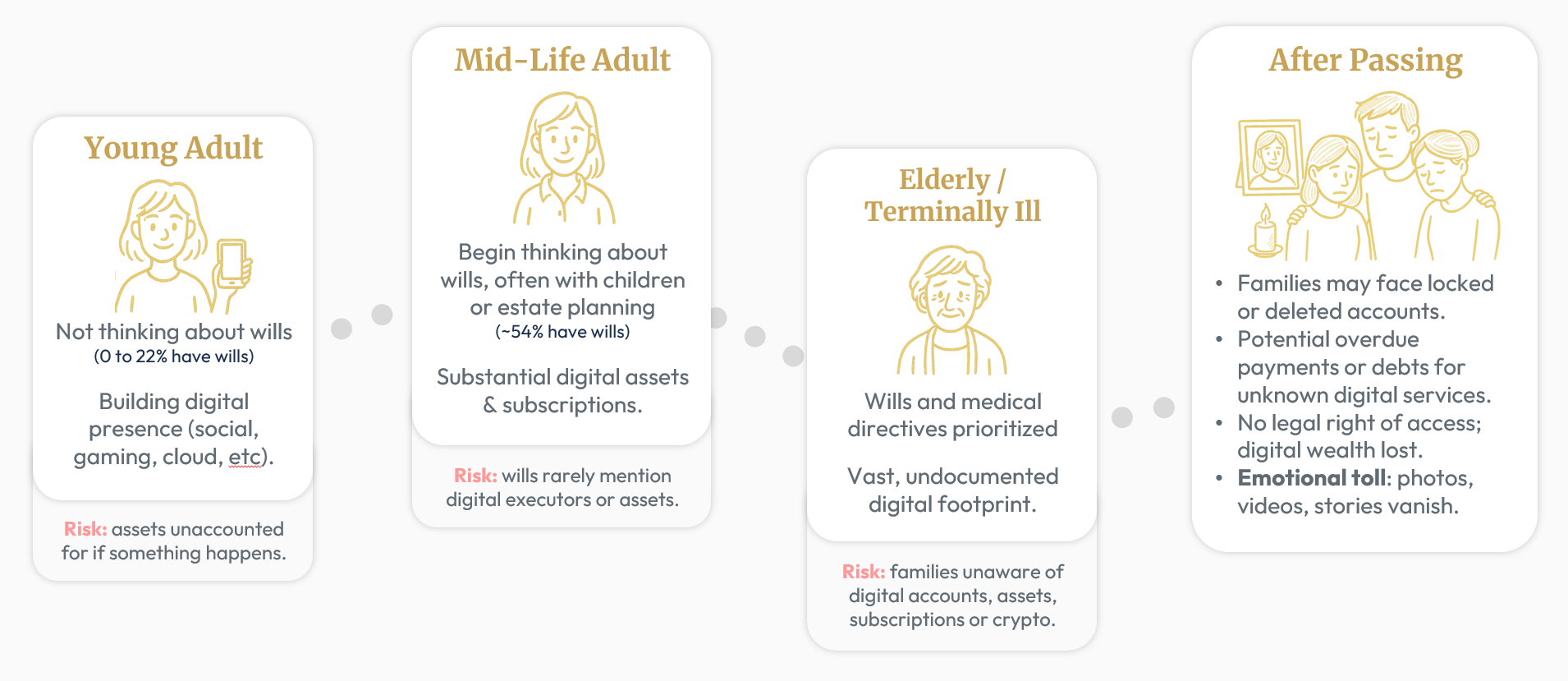Our lives now exist across thousands of digital moments: photos shared with family, messages exchanged with friends, documents stored in the cloud, and accounts that record our work, interests, and memories. Together, these form our digital legacy, the collection of digital assets and digital presence that represent who we are online.

Digital assets are items in digital form that you have purchased, created, or maintained. They include:
Ownership of digital assets can be complex. Many items are not owned outright but licensed for personal use. Reading a platform’s terms of service can help clarify whether content can be transferred or bequeathed to someone else.
Your digital presence is your online identity: the content, messages, images, and interactions that tell your story.
This might include:
Planning what happens to these accounts and records ensures your online identity is treated respectfully when you are no longer here.
If digital accounts are not included in your planning, they can be lost forever. Families may struggle to access meaningful memories or encounter privacy and security barriers.
Planning for your digital legacy helps to:
Creating a digital register is one practical way to begin. This is a secure record of your key accounts, usernames, and instructions. It can be kept with your estate planning documents or managed with help from a legal or trusted professional.

Digital legacy planning follows the same principles as preparing a will. It ensures that your family and executor have what they need to manage your online life when the time comes.